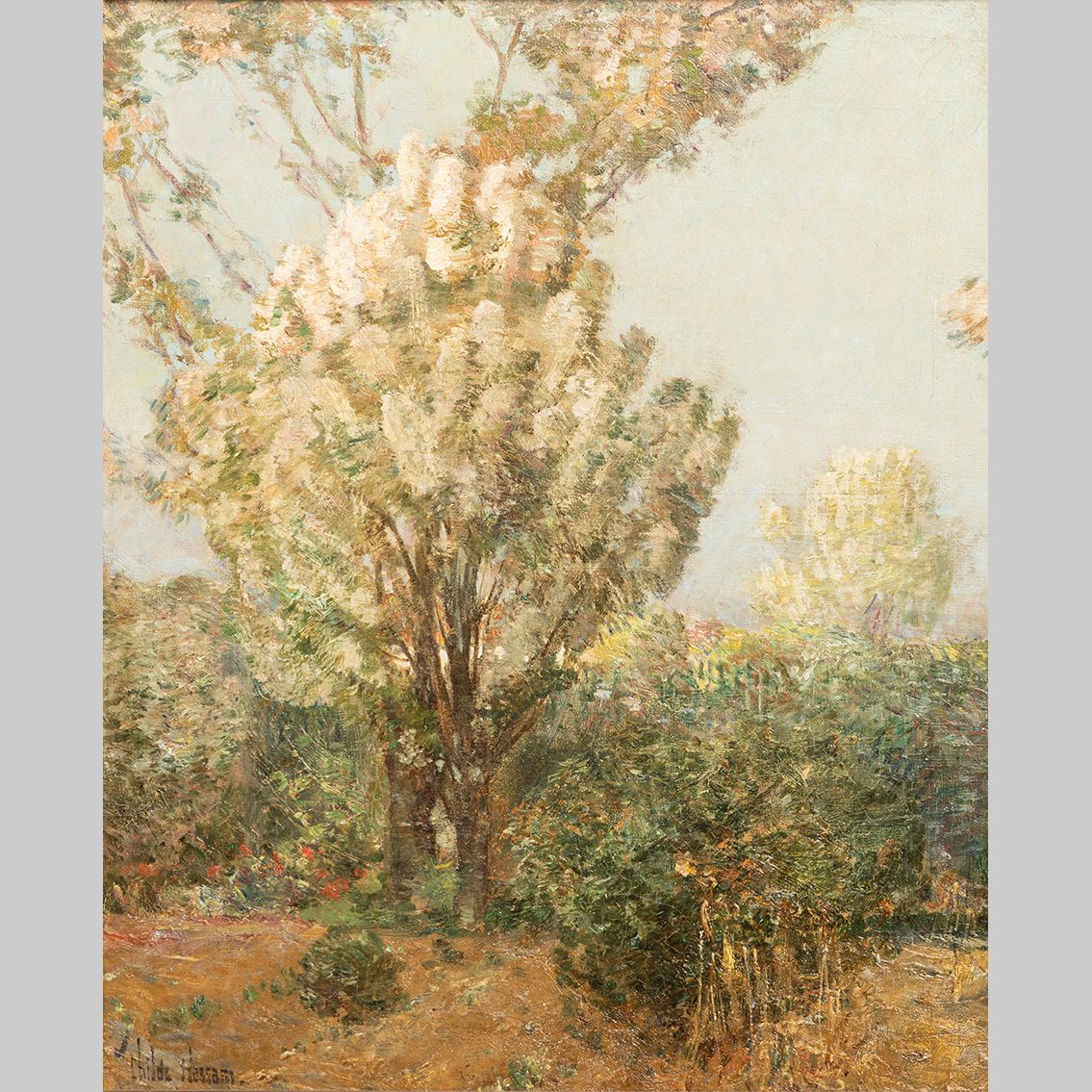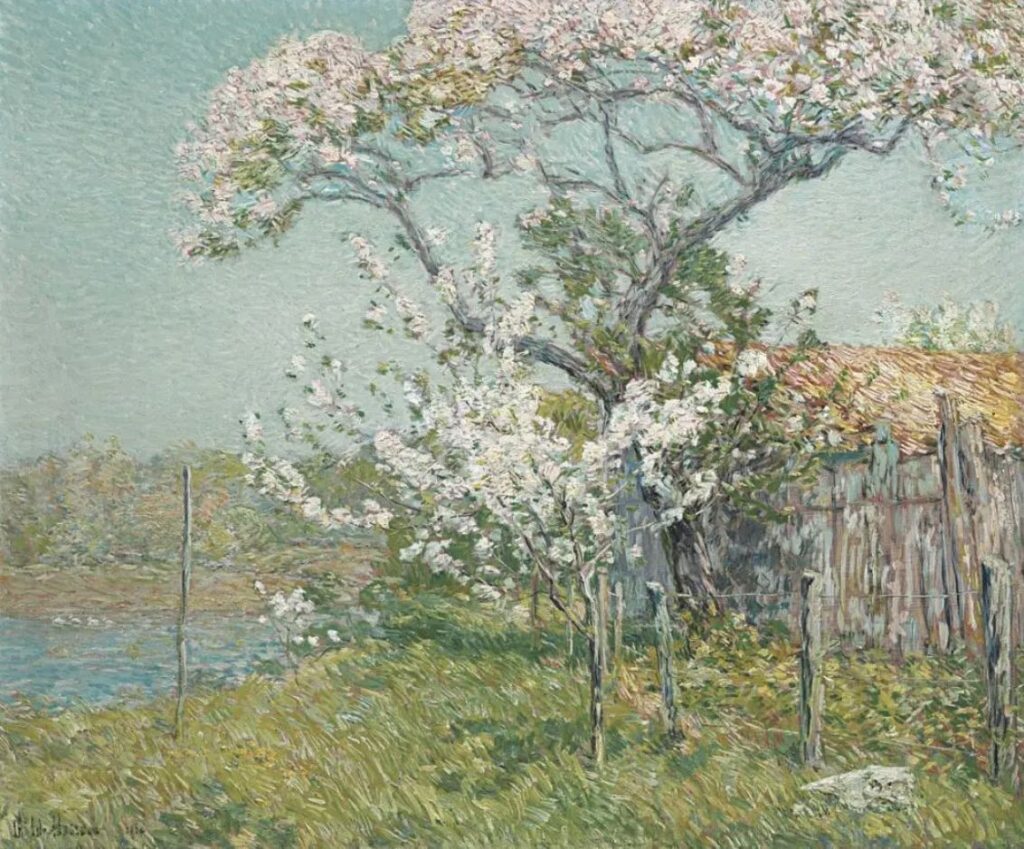
Frederick Childe Hassam (1859–1935)
Spring Flowering Trees, c. 1900
Oil on canvas
McMullen Museum of Art, Boston College, Carolyn A. and Peter S. Lynch Collection, 2022.52

Nancy Netzer
Inaugural Robert L. and Judith T. Winston Director, McMullen Museum and Professor, Art History

Trained in Boston, first as a wood engraver and then as a watercolor painter, by 1883 Hassam established himself in a studio on Tremont Street as a painter of city views and landscapes in the thickly painted style of the French Barbizons. Popular with American collectors, Barbizon artists like Jules Dupré (1811–99), focused on rural scenes (see his painting Landscape with Woman in Red displayed on this floor). From 1886 to 1889, while living in Paris and studying at the Académie Julian, Hassam began to blend impressionist brushstrokes with more solid figures. In 1889 he relocated his studio to New York, but to escape urban life traveled during the spring and summer months to various New England coastal towns, where he often indulged his lifelong attraction to painting the transient beauty of the natural world.
Blossoming trees were a recurrent motif throughout his career, affording Hassam the opportunity to capture with impressionist brushstrokes flickering light on the flowers. In the present work, as in Apple Trees in Bloom depicting the foliage in front of his studio in Old Lyme, Connecticut (see image), he places an older, sprawling tree behind a more vital younger one, a juxtaposition interpreted by scholars as conveying the nostalgia for the past and optimism for the future prevalent among Americans at the beginning of the twentieth century.1
1. Susan Larkin, “Hassam in New England,” in Childe Hassam, American Impressionist, ed. H. Barbara Weinberg (New York: Metropolitan Museum of Art, 2004), 157.

Eileen Sweeney
Professor, Philosophy

This painting is a luscious, cotton-candy depiction of flowering spring trees. It might be too “pretty” except that Hassam’s composition feels like a spontaneous and momentary glance, not “composed” in a classical sense. The large tree in the background is cut off at the side and top. It almost looks like it grows out of the tree in the foreground, and the composition is overbalanced on the left. Invoking the German philosopher Immanuel Kant’s (1724–1804) ideas that the placement of sensations into three-dimensional space and the distinction of objects from one another are the work of reason and not given in sensation or imagination, Hassam makes us observe the way our mind “corrects” the painting, realizing two distinct trees, one behind the other by some distance. Everything but the blossoms is dark and indistinct. If Hassam’s Water Hazard—Maidstone Links emphasizes an objective “just-the-sensations” where people are patches of color in the landscape, Spring Flowering Trees emphasizes the subjective experience of seeing the blooming tree. The tree takes over the painting so that we experience the joyful shock of the trees dressed in their temporary spring flowers. The painting displays the fleeting moment of full spring in ways we do not ever actually “see” it but captures how we “see” it subjectively. So while in the Maidstone Links painting nearby, objects are patches of color, disintegrated into what we “objectively see,” here the focus is blurred and the colors blended, presenting the trees in a single subjective flash of beauty and joy. Hassam captures the pleasure of seeing for and in the subject, Kant would say, conveying the essence of the experience such that we can almost smell the flowers.
